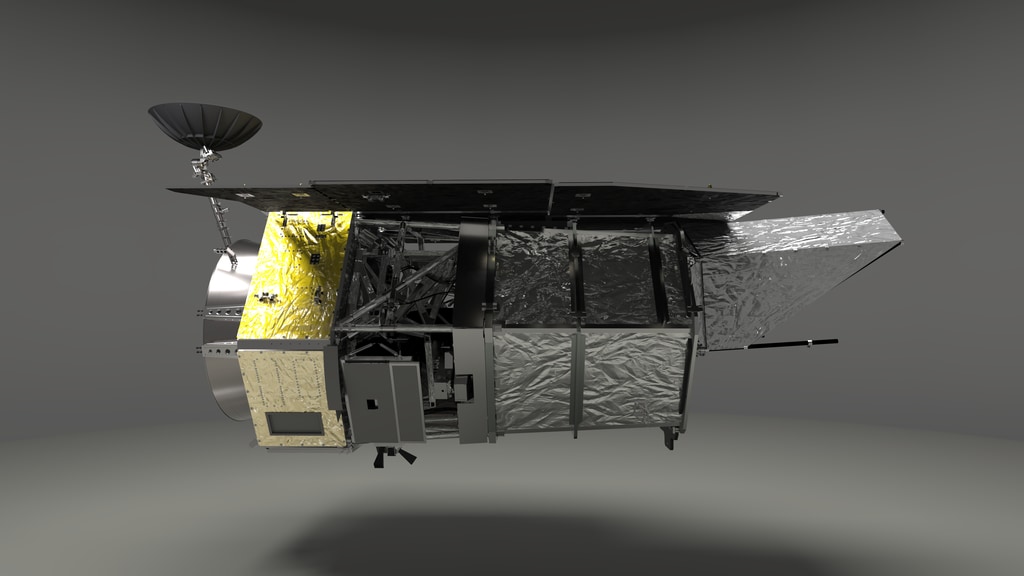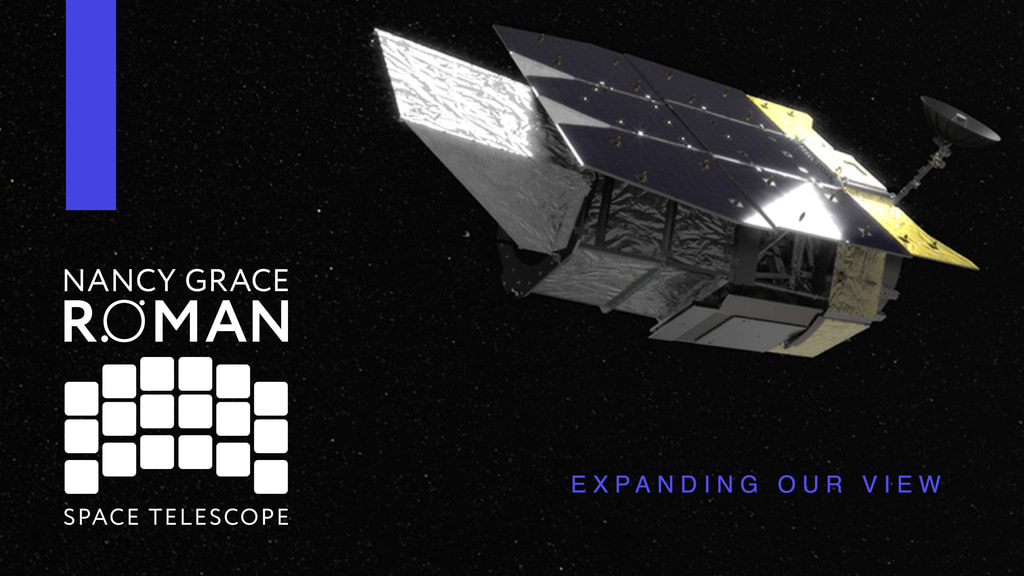Take a Spin With NASA's Nancy Grace Roman Space Telescope
Learn more about the Roman Space Telescope spacecraft with this short tour of the main systems.
Music: “Phenomenon" from Above and Below Written and produced by Lars Leonhard
Credit: NASA's Goddard Space Flight Center
Watch this video on the NASA Goddard YouTube channel.
Complete transcript available.
Scheduled to launch no later than May 2027, NASA’s Nancy Grace Roman Space Telescope mission will help uncover some of the biggest mysteries in the cosmos. The state-of-the-art telescope on the Roman spacecraft will offer the largest picture of the universe we’ve ever seen with the same depth and precision as the Hubble Space Telescope provides.
Roman is a high-precision survey mission that will advance our understanding of fundamental physics. The mission will primarily detect infrared light, which is invisible to human eyes. Earth’s atmosphere absorbs infrared light, which presents challenges for observatories on the ground. Roman has the advantage of flying in space, above the atmosphere.
Roman will collect and focus light using a primary mirror that is 7.9 feet (2.4 meters) in diameter. While it’s the same size as the Hubble Space Telescope’s main mirror, it is only one-fourth the weight, showcasing an impressive improvement in telescope technology.
The mirror gathers light and sends it on to a pair of science instruments. The spacecraft’s giant camera, the Wide Field Instrument (WFI), will enable astronomers to map the presence of mysterious dark matter, which is known only through its gravitational effects on normal matter. The WFI will also help scientists investigate the equally mysterious "dark energy," which is accelerating the universe's expansion. Whatever its nature, dark energy may hold the key to understanding the fate of the cosmos.
Astronomers will also use the WFI to survey our own galaxy in search of exoplanets – worlds beyond our solar system – using the telescope’s ability to sense both smaller and more distant planets than any survey before. This will help determine whether our solar system is common, unusual, or nearly unique in the galaxy. With Hubble-like resolution but a field of view 100 times greater, Roman will combine excellent image quality with the power to conduct large surveys that would take Hubble hundreds of years to complete.
Roman’s Coronagraph Instrument will demonstrate technology to directly image exoplanets by blocking out the light of their host stars. To date, astronomers have directly imaged only a small fraction of exoplanets, so Roman’s advanced techniques will expand our inventory and enable us to learn more about them. Results from the Coronagraph Instrument will provide the first opportunity to observe and characterize exoplanets similar to those in our solar system, located between three and 10 times Earth’s distance from the Sun, or from about midway to Jupiter to about the distance of Saturn in our solar system. Studying the physical properties of exoplanets that are more similar to Earth will take us a step closer to discovering habitable planets.
Old WFIRST version.
Music: “Phenomenon" from Above and Below Written and produced by Lars Leonhard
Watch this video on the NASA Goddard YouTube channel.
Complete transcript available.

Members of the Roman Space Telescope team pose with the telescope’s primary mirror at L3 Harris Technologies in Rochester, New York.
Credit: L3Harris Technologies
For More Information
Credits
Please give credit for this item to:
NASA's Goddard Space Flight Center. However, individual items should be credited as indicated above.
-
Producer
- Scott Wiessinger (USRA)
-
Animator
- Michael Lentz (USRA)
-
Public affairs officer
- Claire Andreoli (NASA/GSFC)
-
Science writer
- Francis Reddy (University of Maryland College Park)
-
Writer
- Ashley Balzer (GSFC Interns)
-
Narrator
- Scott Wiessinger (USRA)
-
Editor
- Scott Wiessinger (USRA)
Release date
This page was originally published on Wednesday, August 28, 2019.
This page was last updated on Wednesday, May 3, 2023 at 1:45 PM EDT.

